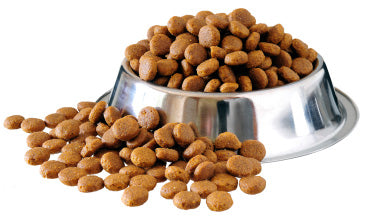Just like human, dogs also need variety of foods. You should periodically vary the food of your dog. Changing dog food is also necessary when your growing pet is moving from adolescent food to the adult food, your adult pet is entering in their senior years, or maybe you think that the current diet is not the best choice for your dog anymore. While changing dog food one question always comes in every dog owner: how to switch pet food safely? In this article, I will suggest you some best and healthy way to switch your dog food.
- What is the best way to change your dog’s food?
Regardless of whether you are dealing with an adult or a puppy, a dog food switch should be done gradually over at least one week period. Due to sensitive stomachs, puppies are usually more susceptible to the stomach upset when a dog food switch is made; therefore, more care should be taken while changing the food of puppies.
Gradually changing your dog food is not difficult. It is just adding the new kibble to the old kibble in small amounts. For changing your dog’s food, you can refer below mentioned directions:
- Day 1- Mix 20% of the new food with 80% of the old food.
- Day 2- Mix 40% of the new food with 60% of the old food.
- Day 3- Mix 60% of the new food with 40% of the old food.
- Day 4- Mix 80% of the new food with 20% of the old food.
- Day 5- Feed 100% of the new food.
If your dog develops vomiting or diarrhea, or stops eating during the above mentioned process, discontinue the new food and consult your vet. It is possible that your dog has allergy with new food.
- Why you shouldn’t change your dog’s diet suddenly?
Some dogs are born with iron stomachs that mean they digest any food easily. For these types of pets, an abrupt or immediate switch may go smoothly. But, most of the pets must be eased into the new food, as there digestive system is not strong. For these types of dogs, abrupt changes in the diet can lead to vomiting and diarrhea because there stomach is filled with bacteria so as to help them digest food. Abrupt or sudden changes in the diet can affect that bacteria and its ability to help assimilate food, which leads to stomach upset.
In addition to this, sudden diet changes can lead to picky eating habits in some pets. While all foods of pet may smell the same to us, new food, even if you are staying with the same brand but switching the recipes, has a different odor. Some dogs react poorly to the changes in taste, odor, and texture, and refuse to eat the new food. Gradually switching will introduce your pet to the new tastes and smells slowly, which helps to ensure your dog takes to the new food.
- What can you do if your dog gets stomach upset while changing his diet?
No matter how slowly or gradually you are switching food; sometimes your canine companion still gets stomach upset. The most common problem when switching the dog food is loose stool, and sometimes diarrhea. If your dog shows this symptom, you can do following things:
-
- You can cook up some plain rice, and even brown up some plain hamburger. After this, mix up the two. Now, give this mixture with a little kibble mixed in with it for one day or two until your pet’s stool starts to harden back up. Then, gradually over a couple of meals feed more kibble than hamburger and rice mixture.
2. You can also add some canned pumpkin to the food of your dog. It works on the same principal as the hamburger and rice mixture. Now add generous amount to the each meal of your dog. When your dog's stool starts to harden, you can back the pumpkin off over a few meals.

